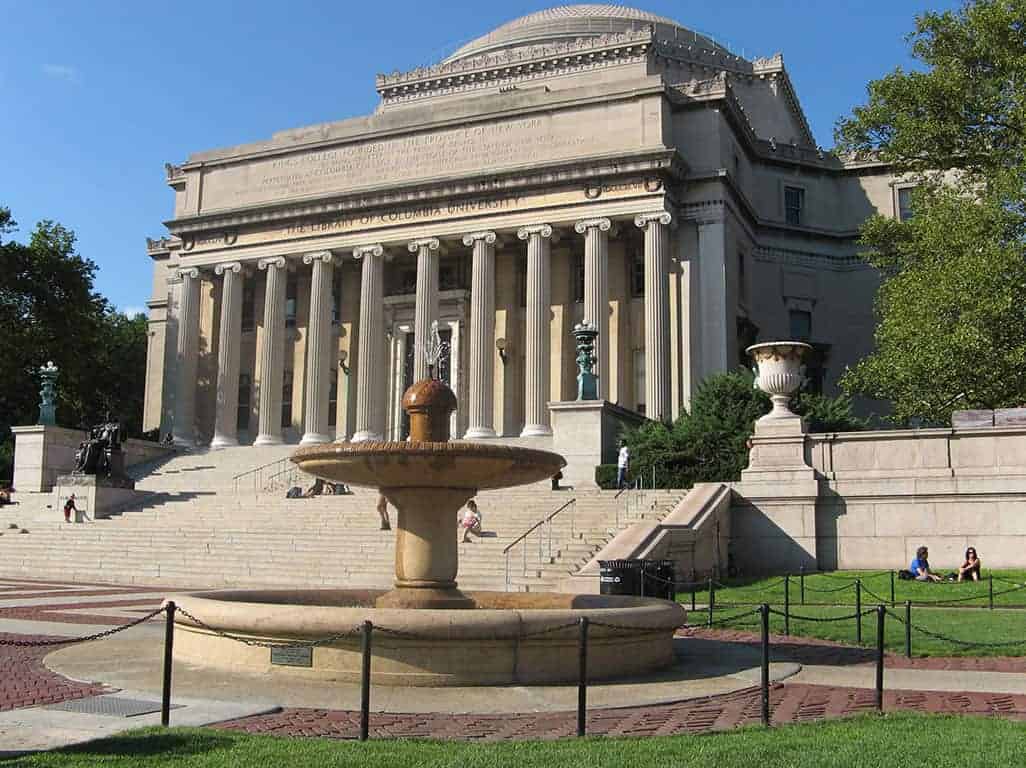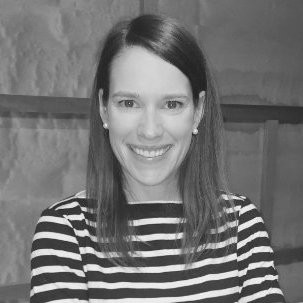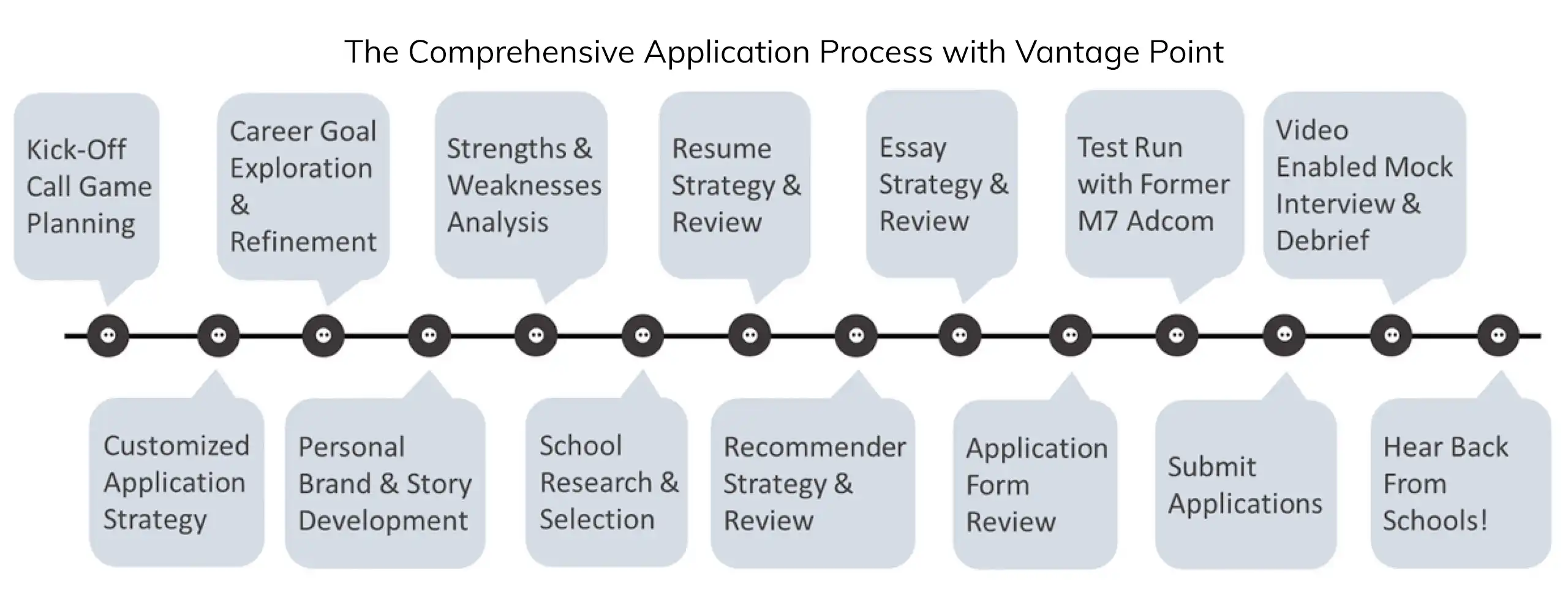What you need to know if you’re applying to Columbia Business School
Columbia Business School is one of the top MBA programs in the world and receives over 6,000 applications every year across its August and January entry options. With an acceptance rate hovering around 17% (for the class of 2018), it takes more than just a great GMAT score to make the cut. Diversity, leadership, impact, perseverance through adversity, vision, and ambition are just a few marks of successful applications. If you’re considering throwing your name in the hat and applying to join the class of 2020, you’re surely eager to learn everything there is to know about “getting in”. Well you’re in luck! Vantage Point Co-Founder, Melody, recently had the chance to sit down with Michael Robinson, Director of Admissions for Columbia Business School, over lunch to gain a bit more insight into the school’s latest approach and thinking. Here are the key takeaways from that conversation.
BUT FIRST, THE NUMBERS
Out of the 6,000 yearly applicants, about 70% are qualified “on paper”, which means that over 4,200 applicants are real contenders in this game of musical chairs. To drive that point home, the average GMAT score of the entire Columbia applicant pool is 710, with Columbia’s admitted student GMAT average only a bit higher at 720. What does that tell you? Differentiation is king; your GMAT score is only part of the equation in getting admitted. Ultimately, out of 6,000+ applicants, Columbia admits around 750-770 students to fill a 550-student class (August entry), with the balance comprising the January entry class.
WHAT IF I’M WAITLISTED?
Columbia uses the waitlist to learn more about candidates and to fill gaps from admitted students who don’t accept their offer. If the admissions committee had specific concerns about your application, those will be communicated to you directly by your assigned waitlist manager. The reality, though, is that the strength of the waitlist pool tends to mirror the admitted class and being placed on the waitlist is not necessarily a sign of a weak application. Since more students are admitted than there are spots (by about 38%; this practice is common across all of the schools, by the way), the waitlist acceptance % is quite low. (Unfortunately, that % varies every year so Michael was unable to give me an exact number.)What does this mean for you? If you’re waitlisted, don’t despair, it could still work out for you but we would advise you to line up a plan B to be realistic.
DO THE NUMBERS ABOVE CHANGE IF I’M A RE-APPLICANT?
Probably! Columbia likes re-applicants. According to Michael, the chances of admission for a reapplicant are actually higher than for a first-time, regular decision applicant. (How much higher, he was unable to say.) But that’s in part because reapplicants are more likely to apply in early decision, which provides an advantage because of the school’s rolling admission process. Reapplicants tend to learn from their prior experience and tend to take a more focused and humble approach in their essays. If you’re a re-applicant, we strongly advise you to re-apply in the early decision round to maximize your chances.
OK SO WHAT DOES ADMISSIONS LOOK FOR?
Besides all the standard stuff (leadership, impact, teamwork, analytical abilities, etc.), Columbia looks for a sincere and genuine passion and enthusiasm for participating in and strengthening Columbia’s community. It’s important to show evidence of how you made efforts to get to know the school. If you didn’t visit campus, which is fine if you live far away, you should plan to attend an info session, reach out to current students/alums, etc. This is especially important for NYC applicants. Admissions is going on the road starting in July and hosting info sessions in major cities around the world so international applicants should watch out for those dates.
In reading essays, Michael cares less about “what” you’ve done and more about ‘how well” you’ve done it. When it comes to career goals, the “why” is very important, particularly if the applicant is planning a career switch. They look for candidates who are proactive about creating their own opportunities; candidates who will take ownership for their career outcomes. They like candidates who are always preparing themselves for a job that doesn’t exist yet. Providing evidence of meetings you’ve had with prospective employers, other research you’ve done, etc. is a great way to show that your goals are realistic. Naturally, a red flag is when it’s evident that the applicant expects the school to “get them the job.”
Columbia cares about your extra-curriculars! They want to see how you’ve gotten involved in your ecosystem at home and work. They’re looking for students who will be active and contribute to the community.
ANY FINAL ADVICE?
Columbia admissions loves meeting prospective students and those interactions can absolutely contribute to the final admissions decision! Michael always makes himself available for informational chats with anyone who requests one. He’s a busy man so try to get on his calendar sooner rather than later! That said, know that it’s much easier to connect with the ‘Officer of the Day (OOD)’ who is available from 9am to 5 pm EST. They also encourage you to engage with current students and alumni as they feel that this is the best way to truly understand the community at CBS.
We hope this leaves you empowered and excited to tackle your Columbia application! There’s a lot to do so now’s the time to get started! If you have any additional questions about Columbia or the MBA application process in general, we’re happy to help. Simply sign up for our
30-minute free consultation to get personalized advice on your profile and plans! Best of luck!
Melody( Co-Founder of Vantage Point MBA Admissions Consulting | Shaping Success Stories for Top MBA Program Applicants | Championing Women in Business ) After embarking on my own MBA journey, I co-founded Vantage Point MBA Admissions Consulting to help aspiring business school students get accepted to the top MBA programs in the U.S. and Europe. As President, I currently lead a team of over 25 superstar consultants to give our clients an unmatched experience, with a focus on white glove, personalized collaboration and mentorship.





Pingback: The M7 Business Schools: A Comprehensive Guide To The Top MBA Schools
March 6, 2025 12:35 pmPingback: Best MBA Programs for Private Equity and Venture Capital | Vantage Point MBA
March 13, 2025 4:34 pmPingback: The Best MBA Programs for Sustainability | Vantage Point MBA
April 23, 2025 2:29 pmPingback: Columbia MBA Essay Questions, Tips & Advice for 2024-2025
May 15, 2025 8:34 pm